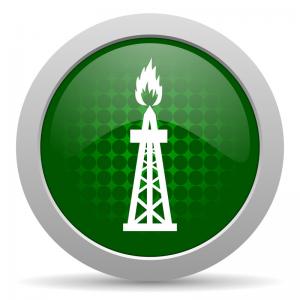EPA Blesses Fracking

The Environmental Protection Agency’s recent study on hydraulic fracturing (“fracking”) appears really as just a careful continuation of what it has been saying all along – that the drilling techniques used to retrieve shale gas are pretty safe. Thus, while it hedged a little, EPA emphasized that there’s no “widespread” problems associated with fracking and drinking water supplies.
“While hydraulic fracturing activities have the potential to impact drinking water resources, we did not find evidence,” the EPA report said, “that these mechanisms have led to widespread, systemic impacts on drinking water resources in the United States.” “The number of identified cases,” the EPA continued, was “small compared to the number of hydraulically fractured wells.”
The reality is that thousands of wells are getting fracked, with the injection of water, sand, and chemicals a mile under the earth’s surface to loosen shale gas from the rocks where it is held. EPA’s research looked at 38,000 oil and gas wells where the technology has been employed, all between 2000 and 2013. The vast majority of them got a good bill of health.
In truth, however, the agency seems to be walking a fine line.
One of the basic tenets of the Obama administration is to reduce carbon emissions by, in part, switching from coal to natural gas – or anything that releases fewer heat trapping emissions when generating electric power. It is thus no surprise that the White House’s environmental arm has underscored its findings released last Thursday, which EPA says are pure and thorough.
Yet none of this is likely to quell the opposition to fracking. The green groups that might otherwise align themselves with EPA say the report has not cleared drillers completely of fouling water supplies. They also fault EPA for not trying hard enough – for saying there’s a limit to how much studying and inspecting it can do. To their thinking, where there’s smoke there’s fire, or more polluted water.
More Hurdles to Jump
None of this is to say that the Obama administration has just rolled over and let the gas producers do as they please. To the chagrin of those developers, the White House has pushed for more federal oversight and especially for regulations that would force drillers to disclose the fracking chemicals they use. The administration also wants stronger standards for well construction to limit fugitive releases and safer dispensing of dirty water that flows to the surface after drilling.
Just how all this is ultimately resolved will, in fact, have profound implications – not just on drillers but also on those who use natural gas. Consider: Production from shale formations has grown from a negligible amount just a few years ago to 15 percent of total U.S. natural gas production. It will continue to grow by 1.6 percent a year, says the US Energy Information Administration, which adds that natural gas will make up 45-50 percent utility generation market in 25 years.
If the reduction of carbon emissions is the goal of President Obama, the strategy is working: In this country, carbon releases are 10 percent less than they were in 2005, mostly the result of switching from coal to natural gas.
For its part, the environmental movement wants to skip past the fossil fuels and move straight into the green era. Right now, though, renewable fuels account for 10 percent of energy consumption and 13 percent of electricity generation in this country. Getting it over the 50 percent hump will take time.
Until then, the greens want to hold shale gas drillers to the highest standards. As for EPA’s draft, “The report, while limited, shows fracking can and has impacted drinking water sources in many different ways,” says Amy Mall, a senior policy analyst with the Natural Resources Defense Council, in a formal release.
Much of the debate has focused on whether the federal government should head the regulatory efforts or whether the states should continue to lead. To try and placate his environmental supporters, President Obama has said that the national regulators should have more authority, noting that federal drinking water laws give them that right.
The American Petroleum Institute, however, says that the states are doing a fine job and that additional federal laws would be overly burdensome. They argue that to reveal the chemicals they use is tantamount to giving their competitors their trade secrets. They also point to research by Stanford University that supports the industry’s case that drilling is safe.
“After more than five years and millions of dollars, the evidence gathered by EPA confirms what the agency has already acknowledged and what the oil and gas industry has known,” says Erik Milito of the petroleum institute, in prepared remarks and in reference to EPA’s fracking study.
The debate won’t end with EPA’s findings. In fact, its next step is to send out its draft for public comment, all before it would finalize its research.
Natural gas producers today have the wind at their backs, with production rising as America turns to cleaner energy. But any misstep could set the industry back, which is why it needs to work closely with the White House and the environmentalists, both of which have real concerns.
Ken Silverstein is editor-in-chief of Public Utilities Fornightly.
Lead image © Can Stock Photo Inc. / alexwhite




